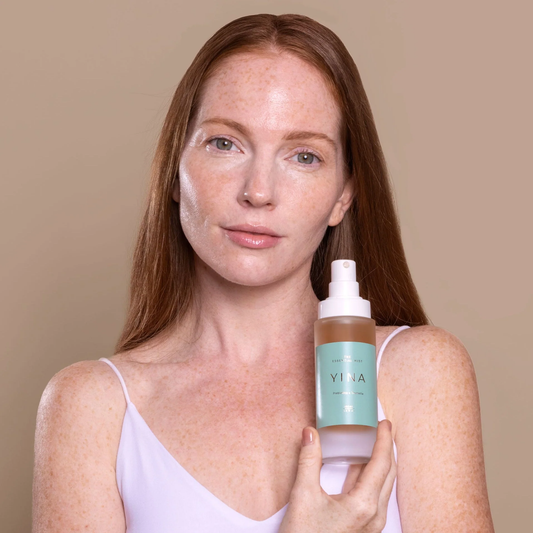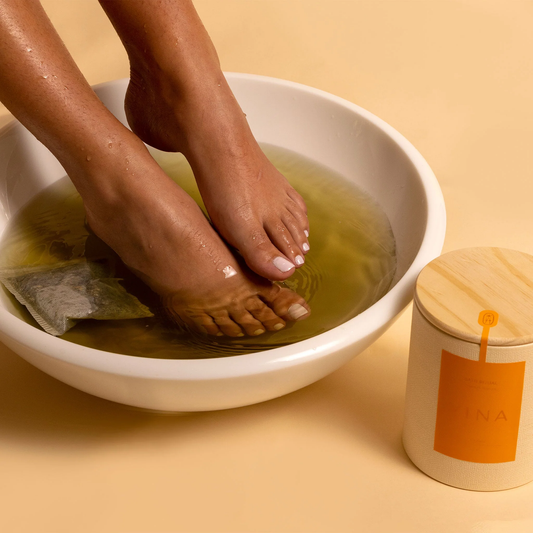In today's fast-paced world, many of us are turning to ancient traditions to restore balance, vitality, and wellness. Two of the oldest and most respected healing systems—Traditional Chinese Medicine (TCM) and Ayurveda—offer profound insights and time-tested practices that help us reconnect with our bodies and nature.
Although TCM and Ayurveda emerged in different regions—China and India respectively—they share core beliefs about health, energy, and harmony. Let's explore how these two systems align and complement each other for a truly holistic approach to well-being.
Key Takeaways
-
Both systems recognize a vital life force (Qi in TCM, Prana in Ayurveda) as central to health.
-
Holistic wellness focuses on energy balance, prevention, and lifestyle alignment.
-
Energy points (Marma and Acupressure) are used to stimulate wellbeing.
-
Diagnosis involves detailed observation and listening to the body.
-
Seasonal living is essential for maintaining balance and vitality.
Shared Energetic Principles: Qi, Prana, and Balance
At the heart of both systems is the concept of vital life force:
-
TCM calls it Qi—energy flowing through Meridians.
-
Ayurveda calls it Prana—energy moving through Nadis.
In both systems, blockages or imbalances in these energetic pathways lead to illness. Health is defined as the smooth, unobstructed flow of energy within and in harmony with nature.
Universal Balancing Forces:
-
TCM: Yin and Yang—opposing yet complementary forces (e.g., cold/hot, active/rest). These are further expressed through the Five Elements: Wood, Fire, Earth, Metal, Water.
-
Ayurveda: Three Doshas—Vata, Pitta, and Kapha, rooted in the five elements (Ether, Air, Fire, Water, Earth). Every person has a unique constitution (Prakriti), and health means keeping doshas balanced.
Both systems embrace a holistic approach, treating the mind, body, and spirit as interconnected. Symptoms are seen not as isolated issues, but as signs of deeper imbalances.
Prevention First: The Core of Holistic Healing
TCM and Ayurveda prioritize preventative care over reactive treatment. The focus is on maintaining balance through:
-
Diet and lifestyle adjustments
-
Seasonal awareness
-
Mind-body practices
Daily choices—what we eat, how we move, how we rest—are considered medicine.
The Art of Diagnosis: Listening to the Body
Both traditions use observation-based diagnostics:
-
Tongue analysis
-
Pulse reading (Nadi Pariksha in Ayurveda, Pulse in TCM)
-
Facial analysis and lifestyle assessment
These methods help uncover the root cause of imbalances rather than just treating symptoms.
Sacred Energy Points: Marma vs. Acupressure
Ayurveda: Marma Points
-
108 key points where Prana resides
-
Gentle touch or oils stimulate healing
-
Commonly used in Abhyanga (Ayurvedic massage) and Panchakarma detox
TCM: Acupressure Points
-
Over 360 classical points along Meridians
-
Stimulated through pressure, acupuncture, cupping, or moxibustion
-
Regulate Qi and Blood, balance Yin and Yang
Shared Outcomes of Stimulating Points:
-
Help reduce stress and anxiety
-
Soothe tension
-
Support healthy digestion and immune function
-
Promote vitality and mental clarity
Examples:
-
Calming the Mind: TCM’s HT7 (Shen Men) vs. Ayurveda’s Hridaya Marma
-
Encouraging Vitality: TCM’s ST36 (Zu San Li) vs. Ayurveda’s Indrabasti Marma
-
Easing Head Tension: TCM’s LI4 (He Gu) vs. Ayurveda’s Sthapani Marma
Aligning with the Seasons: Rhythms of Nature
Both TCM and Ayurveda emphasize seasonal living—adjusting food, movement, and routines based on nature’s cycles:
Spring
-
TCM: Wood element (Liver/Gallbladder), detoxification, light green foods
-
Ayurveda: Kapha-to-Pitta transition, cleansing, bitter/pungent tastes
Summer
-
TCM: Fire element (Heart), cooling and hydrating
-
Ayurveda: Pitta season, cooling foods, avoid overheating
Late Summer/Early Fall
-
TCM: Earth element (Spleen/Stomach), grounding nourishment
-
Ayurveda: Transition to Vata, focus on warm, moist foods
Autumn
-
TCM: Metal element (Lungs/Colon), dryness protection
-
Ayurveda: Vata season, grounding and warming lifestyle
Winter
-
TCM: Water element (Kidney/Bladder), rest and deep nourishment
-
Ayurveda: Kapha accumulation, stay warm, avoid heaviness
Harmonizing Ancient Wisdom for Modern Wellness
Despite their cultural differences, TCM and Ayurveda share profound truths:
-
Health is Energetic: Balance of Qi/Prana is vital
-
Points as Vital Touchpoints: Marma and Acupressure techniques support well-being
-
Nature is the Guide: Aligning with seasonal rhythms supports vitality
-
Daily Habits Matter: Prevention through lifestyle is the best foundation for wellness
How to Integrate into Daily Life:
-
Explore Energy Points: Try Marma or Acupressure techniques to support relaxation and vitality
-
Live with the Seasons: Adjust diet and routine based on seasonal qualities
-
Consult Holistic Practitioners: Seek guidance from trained TCM or Ayurvedic experts
-
Listen Within: Tune into how food, seasons, and habits affect your energy and mood
Conclusion
The ancient health systems of TCM and Ayurveda are more relevant today than ever. Their shared principles remind us that true wellness comes not from quick fixes but from living in balance—with our bodies, our minds, and the natural world. By embracing their timeless wisdom, we can cultivate resilience, clarity, and peace in a chaotic world.
Embrace the ancient. Live the balance.
Frequently Asked Questions
1. Can I combine TCM and Ayurveda in my daily routine?
Yes! Both systems complement each other well. You can integrate Ayurvedic meals with TCM acupressure or seasonal guidance from both to create a personalized approach to wellness.
2. Do I need a practitioner to benefit from these systems?
While practitioners offer deeper insights, many tools—like tongue self-checks, basic seasonal adjustments, and self-massage—can be practiced at home with great benefit.
3. How do I know if I’m more suited to TCM or Ayurveda?
It depends on your goals and personal preferences. Ayurveda focuses more on constitution (dosha types), while TCM is deeply diagnostic and symptom-based. Exploring both can offer a more holistic view.
Meet the Author Ervina Wu
© 2025 Haveda. All Rights Reserved. Haveda does not provide medical advice, diagnosis, or treatment. These statements have not been evaluated by the Food and Drug Administration. Products are not intended to diagnose, treat, cure, or prevent any disease. See additional information.



















